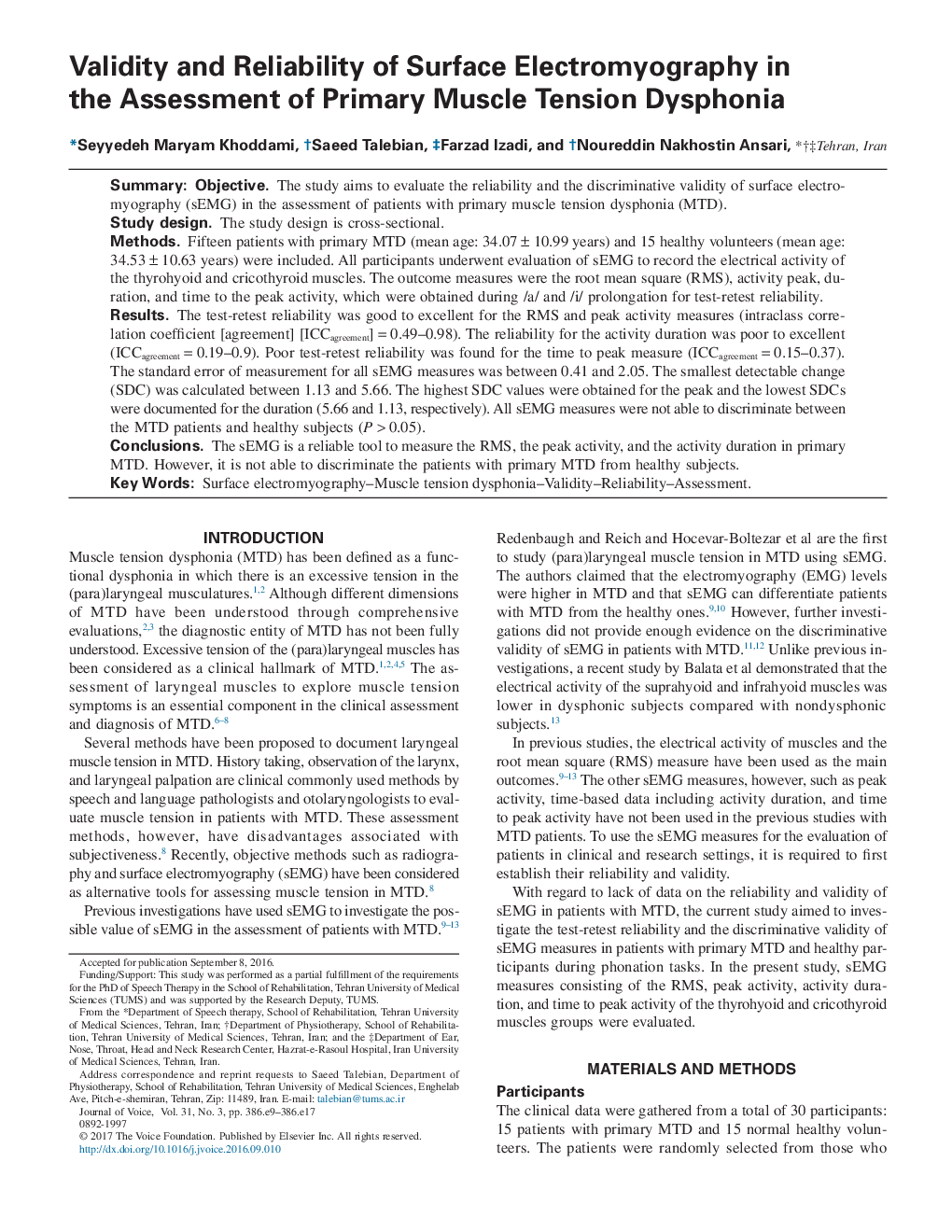| Article ID | Journal | Published Year | Pages | File Type |
|---|---|---|---|---|
| 5124269 | Journal of Voice | 2017 | 9 Pages |
SummaryObjectiveThe study aims to evaluate the reliability and the discriminative validity of surface electromyography (sEMG) in the assessment of patients with primary muscle tension dysphonia (MTD).Study designThe study design is cross-sectional.MethodsFifteen patients with primary MTD (mean age: 34.07â±â10.99 years) and 15 healthy volunteers (mean age: 34.53â±â10.63 years) were included. All participants underwent evaluation of sEMG to record the electrical activity of the thyrohyoid and cricothyroid muscles. The outcome measures were the root mean square (RMS), activity peak, duration, and time to the peak activity, which were obtained during /a/ and /i/ prolongation for test-retest reliability.ResultsThe test-retest reliability was good to excellent for the RMS and peak activity measures (intraclass correlation coefficient [agreement] [ICCagreement]â=â0.49-0.98). The reliability for the activity duration was poor to excellent (ICCagreementâ=â0.19-0.9). Poor test-retest reliability was found for the time to peak measure (ICCagreementâ=â0.15-0.37). The standard error of measurement for all sEMG measures was between 0.41 and 2.05. The smallest detectable change (SDC) was calculated between 1.13 and 5.66. The highest SDC values were obtained for the peak and the lowest SDCs were documented for the duration (5.66 and 1.13, respectively). All sEMG measures were not able to discriminate between the MTD patients and healthy subjects (Pâ>â0.05).ConclusionsThe sEMG is a reliable tool to measure the RMS, the peak activity, and the activity duration in primary MTD. However, it is not able to discriminate the patients with primary MTD from healthy subjects.
